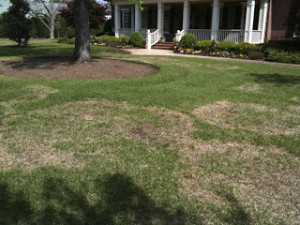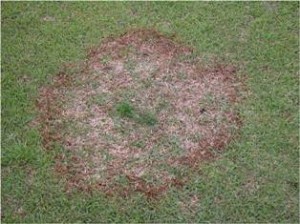Why Is My Lawn Dying?
go.ncsu.edu/readext?217938
en Español / em Português
El inglés es el idioma de control de esta página. En la medida en que haya algún conflicto entre la traducción al inglés y la traducción, el inglés prevalece.
Al hacer clic en el enlace de traducción se activa un servicio de traducción gratuito para convertir la página al español. Al igual que con cualquier traducción por Internet, la conversión no es sensible al contexto y puede que no traduzca el texto en su significado original. NC State Extension no garantiza la exactitud del texto traducido. Por favor, tenga en cuenta que algunas aplicaciones y/o servicios pueden no funcionar como se espera cuando se traducen.
Português
Inglês é o idioma de controle desta página. Na medida que haja algum conflito entre o texto original em Inglês e a tradução, o Inglês prevalece.
Ao clicar no link de tradução, um serviço gratuito de tradução será ativado para converter a página para o Português. Como em qualquer tradução pela internet, a conversão não é sensivel ao contexto e pode não ocorrer a tradução para o significado orginal. O serviço de Extensão da Carolina do Norte (NC State Extension) não garante a exatidão do texto traduzido. Por favor, observe que algumas funções ou serviços podem não funcionar como esperado após a tradução.
English
English is the controlling language of this page. To the extent there is any conflict between the English text and the translation, English controls.
Clicking on the translation link activates a free translation service to convert the page to Spanish. As with any Internet translation, the conversion is not context-sensitive and may not translate the text to its original meaning. NC State Extension does not guarantee the accuracy of the translated text. Please note that some applications and/or services may not function as expected when translated.
Collapse ▲PEST ALERT UPDATE FROM NCSU TURFILES
You know it’s officially spring in North Carolina when there are giant patches of brown grass in bermudagrass, centipedegrass, St. Augustinegrass, and zoysiagrass. These giant patches of brown grass are better known as large patch, caused by the fungus Rhizoctonia solani, and if you’ve ever had an outbreak of this disease, you now know why the disease was coined large patch.
What you may not know however, is what your control options are this time of year. You shouldn’t worry too much if you have this disease on bermudagrass. Bermudagrass tends to grow out of the damage once the temperatures are consistently warmer and the daylight longer.
As for our other warm-season friends, damage tends to be most severe on centipedegrass and recovery may take all summer in extreme cases. Unfortunately, there isn’t much you can do to make for a magical recovery. We rarely recommend fungicides for large patch in the spring of the year, however in worst case scenarios, a fungicide application might help prevent the disease from spreading further. Fungicide applications are best when they are applied preventatively in the fall. If you choose to spray a fungicide this spring, don’t expect a miracle to happen overnight. Also, remember that recovery will be even slower and tougher if you’ve applied a root pruning herbicide as your pre-emerge for summer weeds (these include many of the pre-emergent herbicides found in crab grass preventers and weed and feed products) .
In most cases, the best thing is to stay the course with management practices that will encourage each type of grass to do well (see the link below for tips on warm season grass maintenance). In severe cases, treating damaged areas like a new establishment with light and frequent fertilizer and water inputs may help encourage faster lateral spread. This doesn’t mean you should apply more fertilizer, just smaller doses more often. Applying too much fertilizer will make the disease worse this fall!
Finally, be sure to map the affected areas now while they are clearly visible. You will save yourself some money this fall by spot treating these areas instead of having to make a whole property application, since the disease tends to reappear in the same areas.





